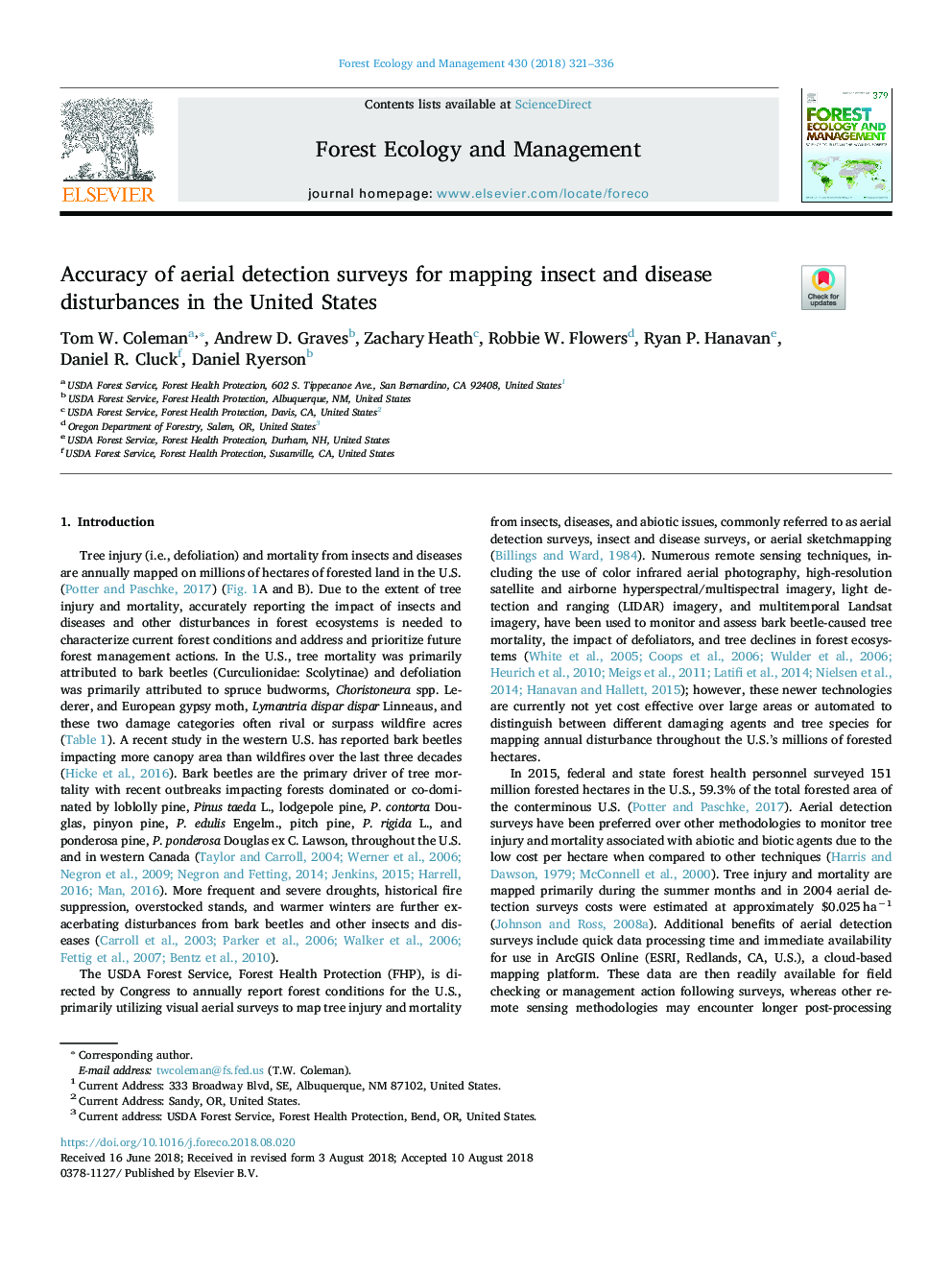| کد مقاله | کد نشریه | سال انتشار | مقاله انگلیسی | نسخه تمام متن |
|---|---|---|---|---|
| 11000029 | 1421330 | 2018 | 16 صفحه PDF | دانلود رایگان |
عنوان انگلیسی مقاله ISI
Accuracy of aerial detection surveys for mapping insect and disease disturbances in the United States
ترجمه فارسی عنوان
دقت بررسی های تشخیص هوایی برای نقشه برداری اختلالات حشرات و بیماری در ایالات متحده
دانلود مقاله + سفارش ترجمه
دانلود مقاله ISI انگلیسی
رایگان برای ایرانیان
کلمات کلیدی
سوسک خرچنگ، حذف کننده ها، دندروکتونوس، پینوس، سنجش از دور، بررسی تشخیص بصری،
موضوعات مرتبط
علوم زیستی و بیوفناوری
علوم کشاورزی و بیولوژیک
بوم شناسی، تکامل، رفتار و سامانه شناسی
چکیده انگلیسی
Insects and diseases annually cause millions of hectares of defoliation and mortality to forested landscapes in the U.S. To monitor these disturbance events, the USDA Forest Service, Forest Health Protection and cooperating state partners conduct annual aerial detection surveys. These data represent the largest, and most historical, remote sensing dataset linking forest disturbances to specific insects and diseases. However, formal accuracy assessments of these data are exceptionally limited in scale and scope. Our two primary objectives were to (1) assess the accuracy of aerial detection survey data for delineating forest disturbances attributed to insects, diseases, and abiotic events across multiple ecological regions and (2) assess the repeatability of aerial surveyors to locate and observe defoliation and mortality on a forested landscape. The methodology used in our study represents the procedures adopted nationwide for aerial detection surveys. We used a stepdown approach in our analyses to show the accuracy of aerial survey observations from broad to specific categories, such as from feeding guilds to specific damage agents. We used error matrices to compare the accuracy of aerially detected events and ground observations. Overall accuracy in all the error matrices was >70% for comparisons of aerial survey observations to ground-collected data. Damage type observations for tree mortality and defoliation had high-levels of accuracy with only 2% and 5% commission error, respectively. More than half of the ground-collected data verified bark beetle-caused tree mortality, representing low commission error (9%). Accuracy declined as the specificity for observations went from genera to species level for tree species and damaging agents, but many of the prominent tree species and damaging agents had zero and low commission errors. In small polygons (<2 ha), aerial surveyors accurately observed counts for tree injury and mortality more frequently than over- and underestimated observations, whereas trees acreâ1 observations were more commonly overestimated than correct trees acreâ1 observations. Greater agreement of polygons occurred when tree injury and mortality were mapped on high-resolution imagery than during aerial detection surveys in the repeatability test, but similar usage of points and polygons were used to note injury between the two survey techniques. In addition, m ean hectares mapped were comparable for all polygons and defoliation polygons between the survey techniques. The results from this study improve insect and disease survey techniques nationwide and increase the use of these data while acknowledging its accuracies and limitations.
ناشر
Database: Elsevier - ScienceDirect (ساینس دایرکت)
Journal: Forest Ecology and Management - Volume 430, 15 December 2018, Pages 321-336
Journal: Forest Ecology and Management - Volume 430, 15 December 2018, Pages 321-336
نویسندگان
Tom W. Coleman, Andrew D. Graves, Zachary Heath, Robbie W. Flowers, Ryan P. Hanavan, Daniel R. Cluck, Daniel Ryerson,
